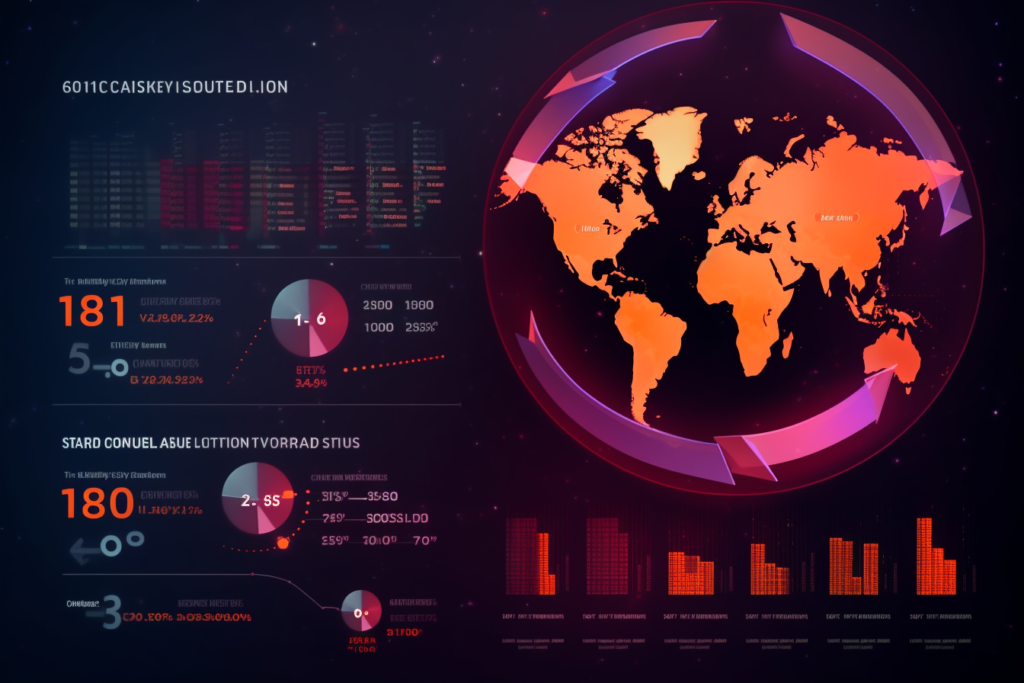We live in an increasingly connected world, with digital technology playing a significant role in both our personal and professional lives. But as we embrace these advancements, we also expose ourselves to a plethora of cybersecurity risks. The numbers don’t lie: cybersecurity is a rapidly evolving and ever-present concern. In this article, we’ll explore 10 shocking stats that emphasize the importance of staying informed and vigilant in the face of cyber threats.
The Growing Threat Landscape
Rapid increase in cyber attacks
- 300,000 new malware samples are created every day. With cybercriminals continuously developing new ways to infiltrate networks and steal sensitive data, it’s no surprise that the number of malware samples is growing at an alarming rate. This highlights the need for organizations to invest in robust security measures and to stay up to date with the latest threats.
Ransomware on the rise
- Ransomware attacks increased by 62% between 2019 and 2021. Ransomware is a type of malware that encrypts a victim’s data, rendering it inaccessible until a ransom is paid. These attacks have become increasingly popular, as they provide cybercriminals with a quick and easy way to make a profit.

The Cost of Cyber Attacks
Financial repercussions for businesses
- The average cost of a data breach is $3.86 million. Data breaches can have severe financial consequences for organizations, including fines, legal fees, and remediation costs. This figure demonstrates the importance of investing in effective cybersecurity measures to protect your organization and its assets.
Loss of customer trust
- 80% of consumers say they would stop doing business with a company that suffered a data breach. Trust is crucial for any business, and a data breach can quickly erode that trust. Maintaining a strong cybersecurity posture is not just about protecting your organization; it’s also about preserving your reputation.
The Human Factor
Employee errors and insider threats
- 95% of cybersecurity breaches are caused by human error. Whether it’s a simple mistake or a malicious insider, the human factor plays a significant role in most cybersecurity incidents. This underscores the importance of providing comprehensive security training and creating a culture of security awareness within your organization.
Social engineering attacks
- 33% of data breaches involve phishing or other social engineering tactics. Cybercriminals often target employees through deceptive tactics, like phishing emails or fake websites, to gain access to sensitive data. Educating staff about the signs of social engineering attacks is essential for mitigating this risk.
Importance of Cybersecurity Awareness
- Only 38% of global organizations claim they are prepared to handle a sophisticated cyber attack. Despite the growing threat landscape, many organizations still lack the necessary cybersecurity measures and training to adequately protect themselves. This highlights the importance of raising awareness and investing in cybersecurity infrastructure.
The Future of Cybersecurity
Artificial intelligence and machine learning
- AI-powered cyber attacks are expected to increase by 50% in the next two years. As technology advances, cybercriminals are also adapting and utilizing artificial intelligence (AI) and machine learning to create more sophisticated and targeted attacks. This means that organizations must also leverage AI and machine learning to bolster their cybersecurity defenses and stay ahead of the curve.
Increased investment in cybersecurity
- Global cybersecurity spending is expected to reach $1.75 trilion in 2025. Recognizing the severity of the threat, organizations are increasing their investment in cybersecurity measures to protect their assets and reputation. This trend is likely to continue as cyber attacks become more prevalent and sophisticated.
- According to research by the University of Maryland there is a new cyberattack every 39 seconds!
Conclusion
The statistics presented in this article paint a sobering picture of the current state of cybersecurity. With cyber attacks on the rise and the financial and reputational costs of data breaches continuing to escalate, it is more important than ever for organizations to prioritize cybersecurity awareness, training, and investment. As technology continues to advance, we must also be vigilant in adapting our cybersecurity strategies to stay ahead of cybercriminals and safeguard our digital assets.
FAQs
- Q: What is the most common cause of cybersecurity breaches? A: Human error accounts for 95% of cybersecurity breaches, emphasizing the importance of employee training and security awareness programs.
- Q: How can businesses protect themselves from ransomware attacks? A: Businesses can protect themselves by implementing strong security measures, such as robust antivirus software, regular data backups, employee training, and network segmentation.
- Q: How is AI used in cybersecurity? A: AI can be used to analyze large amounts of data, detect anomalies, and predict potential threats, helping organizations stay ahead of cybercriminals and strengthen their security defenses.
- Q: Are small businesses at risk for cyber attacks? A: Yes, small businesses are often targeted due to their limited resources and cybersecurity measures, making them more vulnerable to cyber attacks.
- Q: What can individuals do to protect their personal information online? A: Individuals can use strong, unique passwords, enable multi-factor authentication, be cautious when clicking on links and downloading attachments, and regularly update their software and devices.

